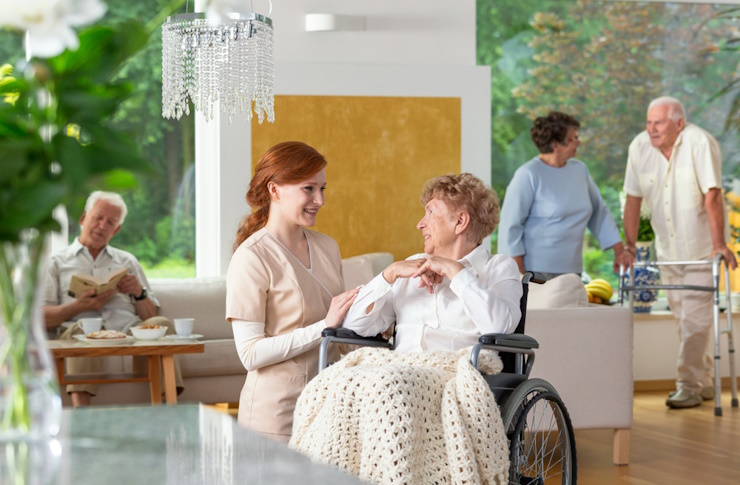Discover Comfortable and Supportive Senior Living Options Tailored to Your Needs
When it comes to choosing a senior living community, quality is key. If you are in the market for a two-bedroom option, you are likely looking for comfort, security, and a fulfilling lifestyle. Let’s explore what makes a quality two-bedroom senior living community and what factors to consider before making a decision.

What are the main types of senior living options available?
Senior living encompasses several distinct categories, each catering to different levels of independence and care needs:
-
Independent Living: Designed for active seniors who can manage daily tasks but desire a maintenance-free lifestyle. These communities often offer amenities like dining services, social activities, and housekeeping.
-
Assisted Living: Provides a balance of independence and support. Residents receive assistance with daily activities such as medication management, bathing, and dressing, while still maintaining a degree of autonomy.
-
Memory Care: Specialized communities for individuals with Alzheimer’s disease or other forms of dementia. These facilities offer 24-hour supervised care in a secure environment with programs tailored to cognitive needs.
-
Skilled Nursing Facilities: Offer round-the-clock medical care for seniors with complex health issues or those recovering from surgery or illness.
-
Continuing Care Retirement Communities (CCRCs): Provide a continuum of care, allowing residents to transition between levels of care as their needs change over time.
Each option has its unique features, and the choice depends on individual health status, lifestyle preferences, and long-term care needs.
How do wellness programs contribute to senior health and vitality?
Wellness programs are integral to many senior living communities, playing a crucial role in maintaining residents’ physical and mental well-being. These programs typically encompass:
-
Physical Fitness: Regular exercise classes tailored to senior abilities, such as chair yoga, water aerobics, and strength training.
-
Cognitive Stimulation: Brain games, puzzles, and educational workshops to keep minds sharp and engaged.
-
Social Activities: Group outings, clubs, and events that foster connections and combat isolation.
-
Nutritional Guidance: Balanced meal plans and nutrition education to support overall health.
-
Stress Reduction: Meditation, art therapy, and relaxation techniques to promote emotional well-being.
By participating in these programs, seniors can improve their overall health, reduce the risk of chronic diseases, and enhance their quality of life. Many communities also offer personalized wellness plans, ensuring that each resident’s specific needs and goals are addressed.
What level of staff support can residents expect in senior living communities?
The level of staff support varies depending on the type of senior living community and individual resident needs. Generally, residents can expect:
-
24/7 Emergency Response: Most communities have staff available around the clock to respond to emergencies.
-
Personal Care Assistance: In assisted living and memory care settings, staff help with activities of daily living such as bathing, dressing, and medication management.
-
Housekeeping and Maintenance: Regular cleaning services and maintenance of living spaces and common areas.
-
Dining Services: Preparation and service of meals, often with options for special dietary needs.
-
Activity Coordination: Staff members who plan and facilitate social events, outings, and recreational activities.
-
Healthcare Coordination: Many communities have nurses on staff or partnerships with local healthcare providers to manage residents’ medical needs.
-
Transportation Services: Scheduled transportation for medical appointments, shopping, and community events.
The staff-to-resident ratio and specific services offered can vary widely between communities, so it’s important to inquire about these details when considering options.
What are the typical costs associated with different senior living options?
The cost of senior living can vary significantly based on factors such as location, level of care, amenities, and individual needs. Here’s a general overview of typical monthly costs for different types of senior living in the United States:
| Type of Senior Living | Average Monthly Cost Range |
|---|---|
| Independent Living | $1,500 - $6,000 |
| Assisted Living | $3,000 - $7,000 |
| Memory Care | $4,000 - $8,000 |
| Skilled Nursing | $7,000 - $12,000 |
| CCRCs | $3,000 - $10,000 (plus entry fee) |
Prices, rates, or cost estimates mentioned in this article are based on the latest available information but may change over time. Independent research is advised before making financial decisions.
It’s important to note that these figures are national averages, and costs can be significantly higher in certain regions, particularly in urban areas or luxury communities. Additionally, many communities charge a one-time entry fee, which can range from $100,000 to over $1 million, especially in CCRCs.
When considering costs, it’s crucial to factor in what services are included in the base price and what additional fees may apply. Some communities offer all-inclusive pricing, while others charge separately for meals, care services, or amenities.
Financial options for senior living include long-term care insurance, veterans’ benefits, life insurance conversions, and reverse mortgages. Medicaid may cover some costs for eligible individuals, particularly in skilled nursing facilities.
As you explore senior living options, remember that the goal is to find a community that not only fits your budget but also provides the level of care, comfort, and engagement you or your loved one needs. Take time to visit multiple communities, ask detailed questions about services and costs, and consider both current and potential future needs when making your decision.




